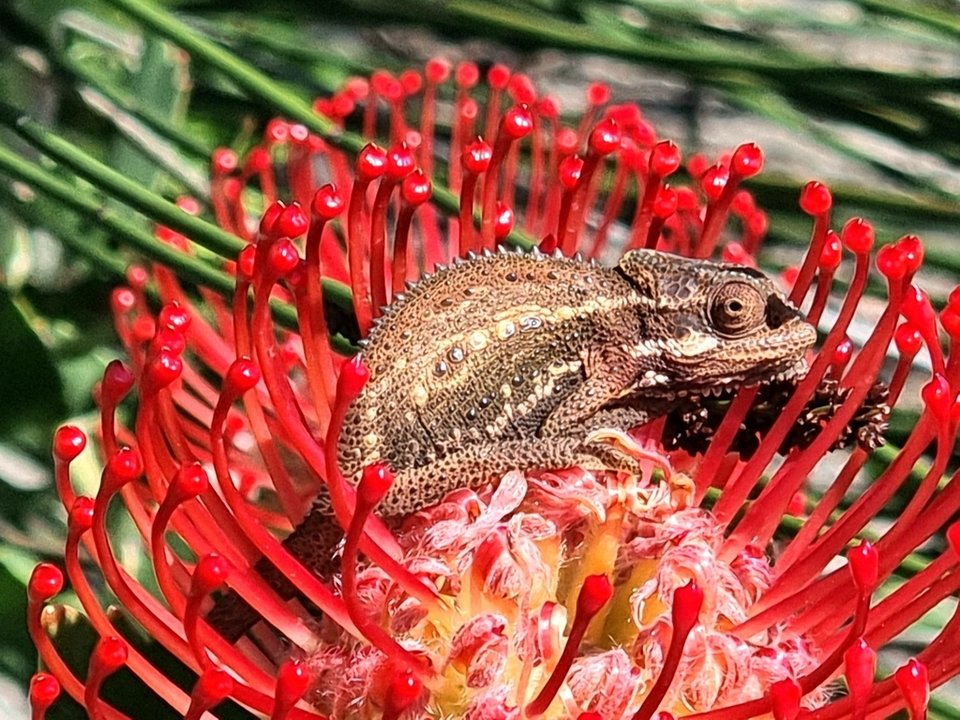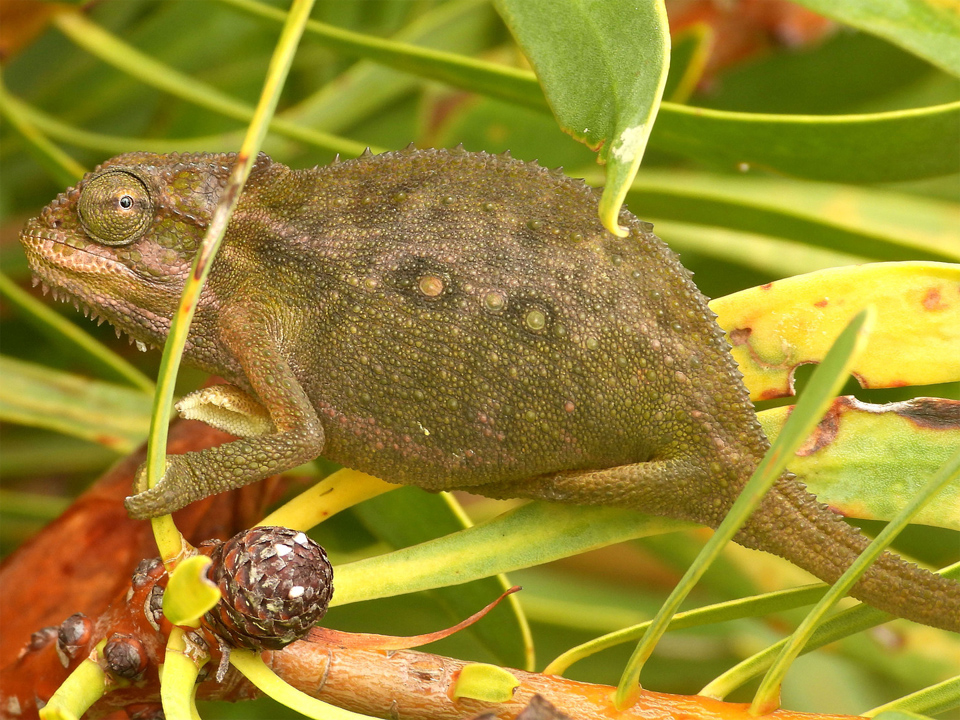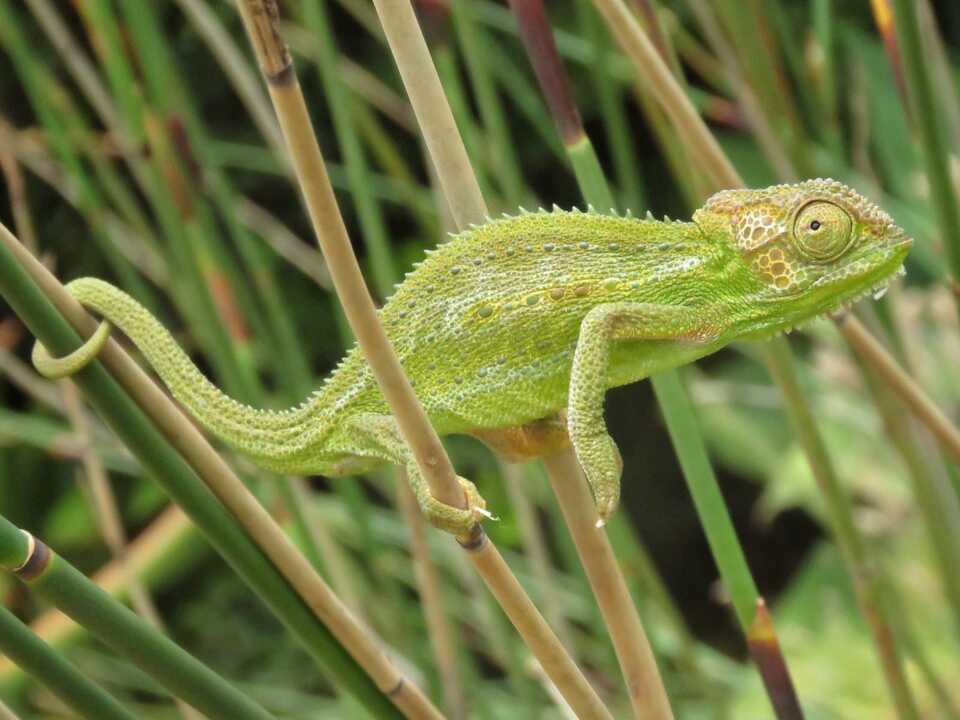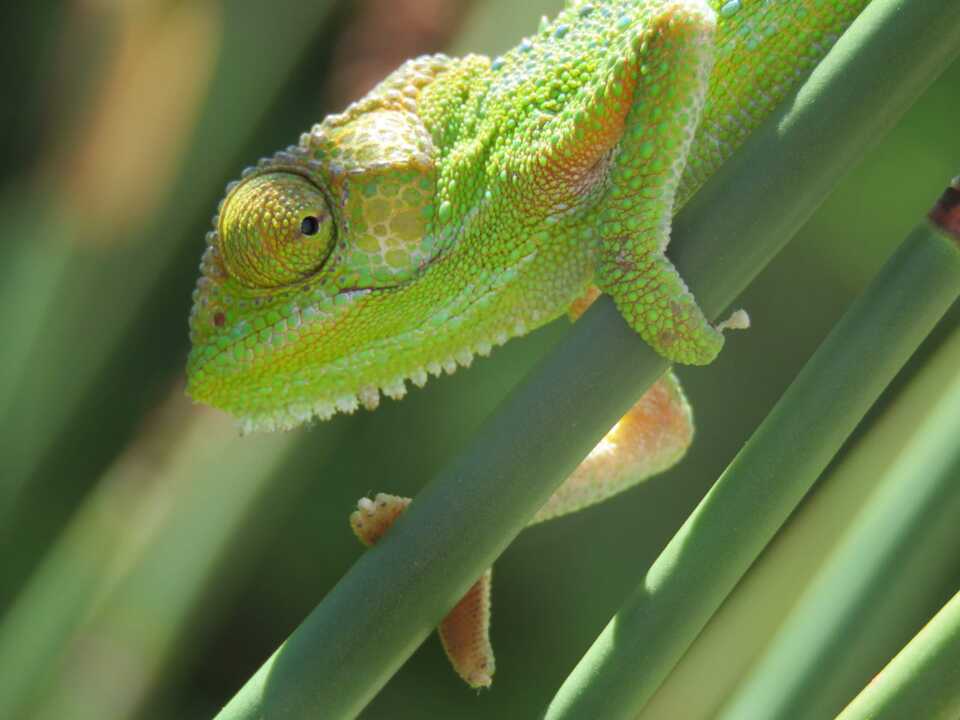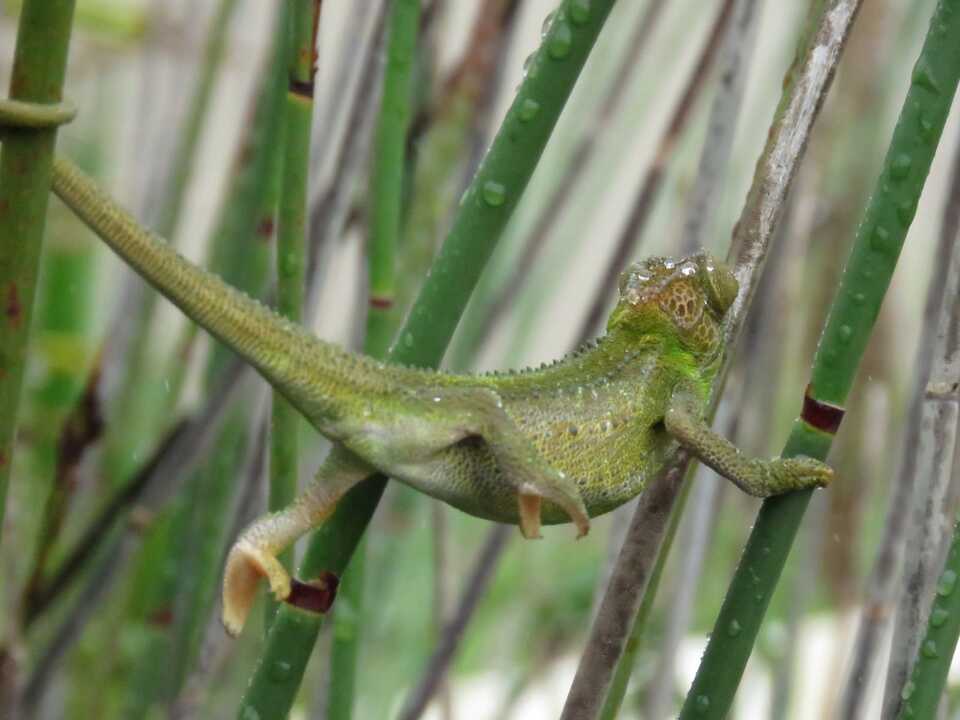Fauna Details
| Common Name | Cape Dwarf Chameleon |
| Family | Chamaeleonidae |
| Date Observed | 09-10-2022 |
| Category | Reptiles |
|---|---|
| Catalogue No. | Z4008RG |
| Breeding/ Spawning Time | Spring,Summer |
| When Observed | DAYTIME |
| Locations Observed | |
| Estuary | |
| Koppie | Few |
| Nature Reserve | Few |
| Small Holding | Few |
| Village | Few |
| Greater Rooiels | |
Bradypodion pumilum
Information
Cape Dwarf Chameleon
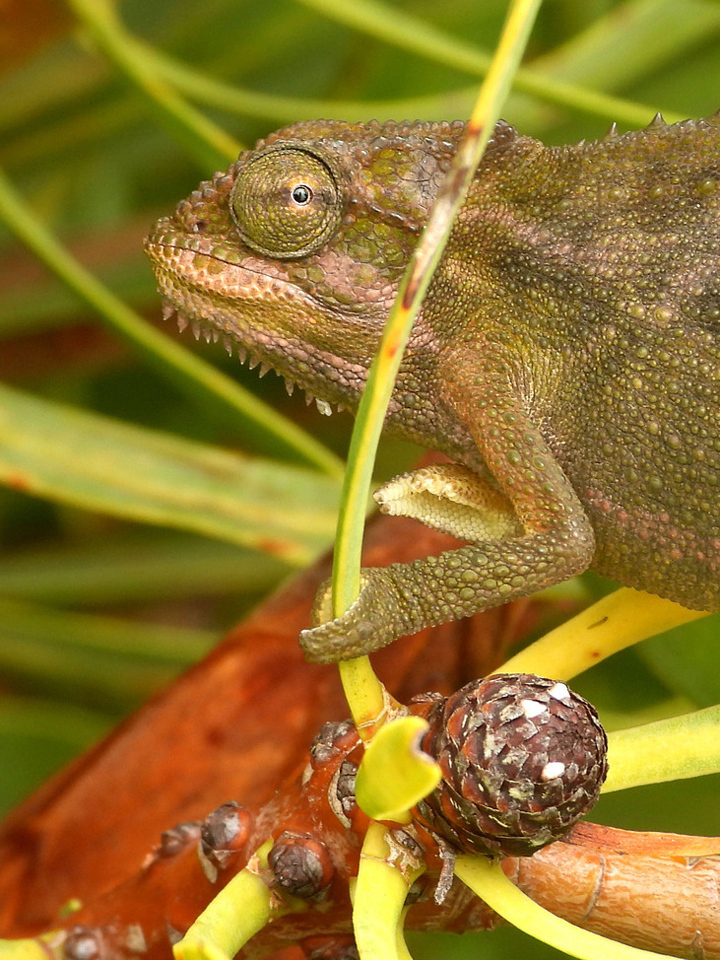
The Cape Dwarf Chameleon (Bradypodion
pumilum) is endemic to the southwestern Cape region from Cape Town to De Hoop,
where it inhabits the fynbos, clinging to twigs.
Chameleons have feet that are
perfectly engineered for climbing stems and branches. Each foot has five toes
and at the end of each tow is a tiny claw, which aids grip as he moves along
the branches. Chameleons have a prehensile tail, meaning it can be used as a
fifth limb, assisting with climbing and balance.
A CHARACTER OF A DIFFERENT COLOUR
Contrary to popular belief,
chameleons don’t turn the colour of the object they are sitting on. Ultraviolet
light, changes in temperature and mood cause chameleons to change their colour.
They regulate their temperature by turning into a darker colour to absorb more
heat, or a lighter colour to reflect light. (See photographs.)
THE COLOUR OF LOVE
The Cape Dwarf Chameleon is an
emotional character. It can change its colour as it progresses from relaxed to
frightened, agitated, or amorous. (Some people do the same.)
FOOD
As insectivores, Cape Dwarf Chameleons
play a helpful role in nature by controlling insect populations. They are
patient hunters, using their independent eyes to scan for their dinner. Spotting
the prey, they would lash out with their tongue, unfurling it to double the
size of their bodies. They catch the hapless insect with the sticky end of the
tongue.
LIFE CYCLES
Cape Dwarf Chameleons are
viviparous. The female keeps the eggs in the maternal reproductive tract until
development is complete. She then gives birth to between five and fifteen
offspring. She does not suckle them, for they are reptiles, and the newborn
babies are self-sufficient. Breeding can occur all year round.
NATURE CAN BE SO CRUEL
Females reach a larger body size
on average than males.
PESTS AND PREDATORS
The Cape Dwarf Chameleon has a
small home range and moves at a slow pace. They are solitary animals, but
sometimes a man has to meet up with some beautiful chameleon lady and he goes
walkabout. This is when they are more exposed to snakes, birds, mongoose and
domestic cats.
CONSERVATION STATUS
Bradypodion pumilum’s current
status is Near Threatened. They have lost some of their habitat to urbanisation
and agriculture. Climate change could also play a role as habitat changes.
In the Rooiels Corridor, too
frequent fires can reduce population numbers. Sadly, they are also run over by
idiots not sticking to the 20 km/hour speed limit in Rooiels.
References:
Animal Talk
SANBI
